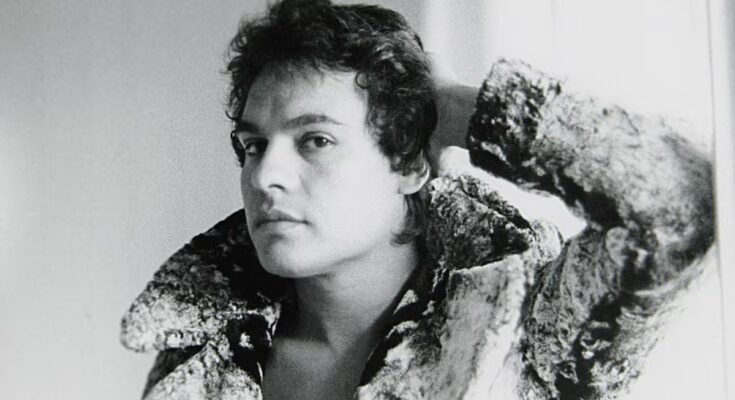This is an episode of the weekly newsletter from Mexico, which can be followed for free at this link.
For many years he had nothing, that’s why he then wanted everything. Alberto Aguilera Valadez was abandoned by his mother and at the age of five was placed in an orphanage, ran away and began selling donkeys, suffered abuse and mistreatment, slept on the streets and even spent a period in prison. Along the way of all these difficulties, Alberto Aguilera became Juan Gabriél, wrote 1,800 songs, sold more than 150 million records, had six children, dozens of houses, filled the Hollywood Bowl and the Palace of Fine Arts, became close to politicians, fought with the Treasury and even with Televisa. But, above all, his metamorphosis, his revenge (as poetic as it was epic) transcended the Mexican prejudices of class, race and gender that seemed indestructible in pop culture. In the land of domineering and quarrelsome male breeders, she triumphed by shaking her hips in her sequined jackets. Everyone loves Juan Gabriel so much.
The culmination of his career, the definitive transgression, was certainly the concert at the Palace of Fine Arts in the capital. On May 12, 1990, on the noble stage of the Mexican venue reserved until now only for high culture, Juan Gabriel appears in a tight black, baroque dress, with shiny, golden rivets: “It’s the happiest moment of my life.” The director of the Fine Arts Orchestra had refused to collaborate in the concert and the most petulant critics of the time were tearing their clothes. “Juan Gabriel desecrates the Fine Arts”, read the newspaper headlines.
The king of Palenques, a banal and effeminate popular idol, in the sacred house of the opera, together with the largest orchestra in the country. This is how Carlos Monsiváis explained it in his commentary the following day: “The defenders of good music are joined by the explosion of homophobia, that shield of chauvinist faith, that seal of intolerance as an aura of integrity. Homophobia is embraced by courageous editorialists who still remain in disbelief in the face of an individual with such manners, with such fame and with such success.” During the show, Juan Gabriel flirts with the audience, talks about you and greets the wife of the controversial president Salinas, alleged facilitator of the sacrilege after the singer’s support for his campaign.
“Who wants to marry me?” says the Divo with the audience already engaged. “The answer – Monsiváis continues – is predominantly or almost exclusively male. And the cockerels, the mayors, the fearsome beings, the angry males stand up and shout with the sincerity of those who stage the ban: “Yo, Juanga! Juan Gabriel, you are unique! Look at me! “Here I am, look at me!”, and in addition to the exclamations that make the army of psychologists and psychoanalysts happy, experts in the art of verifying the unlocking of homosexual nuclei.”
Juanga’s assault on the Palace of Fine Arts was filmed this Saturday in the Zócalo. The capital’s great square filled again, although not as full as when Juanga himself broke the record a couple of decades ago by cramming 350,000 people into the great esplanade. The broadcast of the concert on giant screens was part of the promotion of a new Netflix documentary series, Juan Gabriel: I must, I can and I want. The main attraction of the series is the detailed archive provided by the artist’s family: 30,000 photographs, 2,268 videocassettes and almost half a million audio files made mostly by himself during his decades-long career.
The file collects another of his most appreciated moments. In 2002, besieged by the persecution of his private life by the tabloid press, Juan Gabriel gave an interview on television. The journalist asks him: “Juan Gabriel, they say he is gay, but is Juan Gabriel gay?” Answer: “They say you don’t ask what you see.” It could have perfectly been the lyrics to one of his songs. That talent for ellipsis, for saying without saying, that mix between the syrupy saccharine of Agustín Lara and the plaintive heartbreak of José Alfredo.
Monsiváis explains it better, again: “Juan Gabriel is the literal reclamation of what has been expelled from the television canon or what could never be included: the nacos and the truck drivers and the romantic secretaries and the homeless housewives who wait and the “weirdos” and the teenagers from the slums. And that taste has crossed marginality, tamed modernist jealousy and homophobia, and today, stripped or not of its original impulse of transgression, it equally triumphs at the Atlante Stadium, in luxury cabarets and in the Palazzo delle Belle Arti”.
EL PAÍS offers almost 60 newsletters on a wide variety of topics they have has exceeded one million registered readers and where the economic issues lie feminism cinema, chess and philosophy. The most popular are ‘The director’s letter‘, ‘The country of the morning‘, ‘The director’s choice of Cinco Días‘and that of the cultural supplement’Babelia‘.



